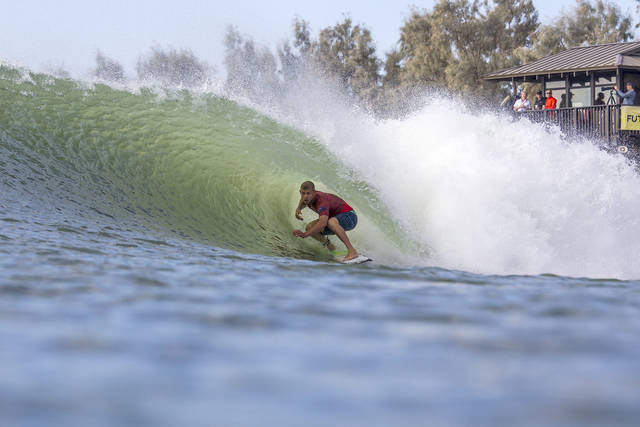It wasn’t a sanctioned event, but one of the most important and influential World Surf League gatherings occurred this past week. It was a contest that could end up shaping the future of competitive surfing, if not at least contributing
It wasn’t a sanctioned event, but one of the most important and influential World Surf League gatherings occurred this past week. It was a contest that could end up shaping the future of competitive surfing, if not at least contributing to its progression.
Kelly Slater’s wave pool creation in Lemoore, Calif., was the site of a world-class exhibition that included the best pros on the WSL Championship Tour. They were all there to test out the technology in a contest format, showing some of the sport’s all-time greats what can be done.
But the question remains: Is heading towards the man-made wave a good direction for the WSL to explore?
The reports from the competitors and observers were all glowing. Everyone loved the even playing field, the perfection of the conditions and the ability to be at their best. Of course that’s going to be the reaction when nothing of significance is on the line.
What will need to be weighed are how eliminating the variables will impact the integrity of the sport. Until now and for the foreseeable future, the quality of the waves will remain one of the most important factors for competition. The ability to read the ocean and choose the best waves has always been a key component, as well as one of the factors that can contribute to upsets taking place.
Some surfers who have been considered the best, like Slater and John John Florence, have always had a knack for waiting out a heat to then have the perfect wave come to them. Some consider that luck, some think it’s much more than that. But removing that layer in the evaluation process would be a negative for those types of surfers.
It can also be one of the only advantages for a local wild card. Look at someone like Yago Dora, who surfed his way into the Rio Pro and then went on to take third place. Or some of the locals who compete at Teahupoo, like Bruno Santos. His knowledge of that wave took him into the 2016 quarterfinals.
Having that specific experience at a break that the world tour regulars may not frequent is what gives the wild cards a chance.
If you’re trying to make the fairest competition possible, then yes, the wave pool should bring us closer to that end. But is that the goal? Would that make the events more boring? Would the same people then win all the time?
We’re not close to having that situation arise any time soon. Slater’s pool is essentially one of a kind. But it’s already been brought up as an eventual replacement for at least some contests. There are a few stops on the world tour that aren’t exactly world-class caliber conditions. Riding perfect barrels and exiting to glassy faces certainly sounds more enticing than contending with the chop in parts of Europe, or even Huntington Beach.
Yet the ability to surf those waves well has always been one of the boxes champions have had to check off.
There will come a day when this discussion becomes more serious and more immediate. When it does, I’ll be interested to see where the loyalties are. Will the purists win out? Or will the quest for perfection?
For now, it’s like a mecca for the world’s best surfers and it sure looks like an amazing creation.
•••
David Simon can be reached at dsimon@thegardenisland.com.


